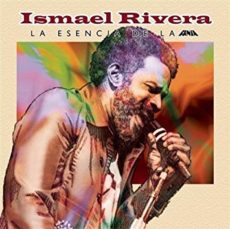
Daily Dose Of Jazz…
Ismael Rivera also known as Maelo was born on October 5, 1931 in the Santurce sector of San Juan, Puerto Rico. The oldest of five children he was always singing and banging on cans with sticks. He received his primary education at the Pedro G. Goyco Elementary School and then went on to learn carpentry at a vocational school. He also shined shoes to help his family financially and when he was 16 years old, he worked as a carpenter. During his free time he would hang around the corner with his best friend Rafael Cortijo and sing songs. In 1948, he and Cortijo joined El Conjunto Monterrey, where he played the conga and Cortijo the bongos, but was unable to work full-time as a musician because of his work as a carpenter.
In 1952, Ismael joined the U.S. Army but was quickly discharged, because he didn’t speak English. He returned to Puerto Rico and went to work as the lead singer with Orquesta Panamericana, recording and scoring his first hits with the songs El charlatán, Ya yo sé, La vieja en camisa and La sazón de Abuela. However, an incident between Rivera and another band member, over a girl, led to his departure from the popular band. In 1954, he joined Cortijo’s Combo and recorded songs, such as, El Negro Bembón, El Yayo, María Teresa and Yo Soy del Campo, which soon became hits in the Latin community in America
With Cortijo’s Combo continuing to gain fame, so did Rivera’s reputation as a lead singer. Rivera was named sonero mayor by Cuban producer Ángel Maceda, owner of club Bronx Casino in New York and played the band went to New York City and played in the famed Palladium Ballroom.
By 1959, Rivera, together with Cortijo and his Combo were casted in the Harry Belafonte movie titled Calipso. He toured with the combo that included Rafael Ithier and Roberto Roena, throughout Europe, Central and South America. Arrested for drug possession after a trip to Panama with the Cortijo combo, he took the fall to spare the other band members. After his release he formed his own band called Ismael Rivera and His Cachimbos, becoming quite successful for eight years. He reunited with Cortijo and recorded Juntos otra vez. Eventually going solo, he did well with the recordings of El Sonero Mayor, Volare and scored his greatest hit with Las Caras Lindas (de mi gente negra).
1974 saw Ismael in a recording in concert at Carnegie Hall and four years later was in Paris, France opening for Bob Marley in 1978. The death of his childhood friend, Rafael Cortijo in 1982, affected him emotionally to the point that he couldn’t sing in the tribute, and was actively involved in the creation of a historical museum which depicts the contributions made to the cultural life of Puerto Rico by the black Puerto Ricans.
Composer and vocalist Ismael Rivera passed away on May 13, 1987 in the arms of his mother Margarita, from a heart attack. He recorded eleven albums as a leader and has had some thirty compilations released. Posthumously in 2008 Puerto Rico’s governor Aníbal Acevedo Vilá signed a proclaim stating that every anniversary of Rivera’s birth will be celebrated as Día Conmemorativo del Natalicio de Ismael Rivera, the Puerto Rican Senate declared October 5 as Ismael Rivera Day, has a plaza named for him Plaza de los Salseros that has a statue and plaque dedicated to him.
![]()
More Posts: vocal


